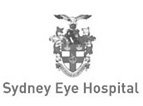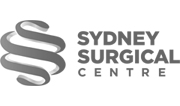ICL Surgery
Implantation of a phakic intraocular lens (“phakic IOL”) is a procedure where a patient has refractive surgery with the implantation of a biocompatible contact lens, while preserving both the cornea and natural lens inside the eye. One such type of implant is the Visian implantable collamer lens (ICL). The ICL has been available as a surgical option since the mid-1990s, and long-term safety data are now available.
The ICL sits just in front of your natural lens, behind the coloured part of your eye. It cannot be seen, except by your surgeon under a microscope, and it cannot be felt inside the eye. The ICL procedure enhances your natural lens. The natural crystalline lens in your eye is not altered, and it is important to retain this, as it has an important function in adjusting near focus. The ICL procedure does not require alteration of your cornea such as in laser procedures, so the visual results are described as “high definition”. There is also no risk of biomechanical weakening of the cornea, known as ectasia, which can cause permanently reduced vision. While this is a risk factor with laser vision correction procedures, Dr Chiu’s approach is to minimise your risks by choosing the safest possible procedure. In addition, there is no long-term impact on dry eye, which is the most common side effect after laser vision correction.
The ICL lenses are permanent and will last longer than your life, however the procedure is also reversible. The lens can be taken out and possibly swapped for another ICL should your script or visual needs change.
Who is a good candidate for the procedure?
The most suitable patients for phakic IOL procedures are people aged 21 years to 45 years, though older patients may also be suitable depending on their examination findings. With the new multifocal ICL the age range is now TGA approved to up to 60 years. The eyesight and prescription should be stable.
If you wear contact lenses you should refrain from wearing these a week prior to your assessment.
Phakic IOL implants are suitable for myopic (short-sighted) people and hyperopic (long-sighted) people, although the eye must meet certain criteria to ensure safety of the procedure. Astigmatism can also be easily treated.
Patients with pre-existing glaucoma should consider other alternatives.
If cataract has developed, which is usually the case in people over the age of 60, and occasionally in younger people, then a more suitable procedure is to remove the patient’s natural lens and replace it with an intraocular lens implant (cataract extraction and intraocular lens insertion).
If you have had cataract surgery, the ICL can also be used as a secondary, or “piggy back” lens, to potentially further improve, or fine-tune the vision. Your clinical assessment with Dr Chiu and her staff can determine your suitability.
What are the indications for phakic intraocular lens implants?
Phakic intraocular lenses are recommended for moderate to severe cases of near-sightedness, or extremely thin or dry corneas unsuitable for laser refractive surgery.
While phakic IOL surgery of this type was first performed in 1993, the Visian ICL has been available since early to mid-2000s. In the past, ICL surgery has been reserved for patients not suitable for laser eye surgery. Due to the availability of long term safety data over 15 years, low complication rates, minimal side-effects, and superior quality of vision, this procedure is now the preferred procedure for some patients, depending on their suitability. ICLs are offered to patients with prescriptions over -3.00, and highly recommended for patients with prescriptions of -5.00 to -6.00 and above.
ICLs remove the risk of biomechanical weakening of the cornea that can occur with laser eye surgery. While the ICL is permanent, the procedure is also reversible. Patients with dry eye will have no impact on their disease after ICL surgery, whereas laser eye surgery can worsen dry eye symptoms.
What are the preoperative preparations?
If you wear contact lenses please do not wear them 48 hours prior to your surgery.
In some patients a preliminary procedure known as an iridotomy may be performed, where a hole is created in the periphery of the iris to control fluid pressures within the eye following lens implantation. This is for people with hyperopic prescriptions.
The procedure is performed in a day surgery. Both eyes are usually operated on the same day. A sedative may be administered to help you relax.
The nursing staff instil anaesthetic eye drops to numb your eye. Dr Chiu will prepare your eye for the surgery by cleaning the eye and making the area sterile, and covering your face and body with sterile drapes, with plenty of air and oxygen passing underneath. A lid speculum is placed, which is a small clip that keeps your eye open during the procedure. The ICL is prepared and folded precisely. Dr Chiu then performs the procedure as keyhole surgery, and makes a tiny incision in the cornea, and places additional anaesthetic medication inside your eye. A clear jelly-like substance is placed into the eye, which protects and cushions the internal structures of the eye. The folded ICL is placed carefully inside the eye, unfolds, and placed in the correct position between the iris and the natural lens. Your natural lens is not removed. The clear jelly-like substance is aspirated from the eye and replaced with the eye’s normal fluid. Antibiotic is paced within the eye. The incision is then closed without sutures, and your eye is covered with a shield.
The procedure takes about 20 to 30 minutes, and you can return home on the same day.
You then attend a visit 1 day, 1 week, and 1 month following the procedure. Vision is usually blurry the day of the procedure. The visual recovery is rapid with most patients seeing well the day following the procedure. Stable vision results are seen 1 months after surgery.
What are the risks and complications?
As with any surgical procedure, certain complications may occur. Infection inside the eye, usually developing within the first few days of surgery, is rare and serious. There is a small rate of reoperation to adjust the lens. Rarely, there may be damage to the lens, retina, or crowding of the drainage structures causing the pressure in the eye to rise, a glaucoma-like condition. Halo and glare can be common in the first few days and generally settle quickly as your visual system adjusts to your new vision. It is not uncommon to feel grittiness in the first few days to weeks following surgery, which resolves.


















